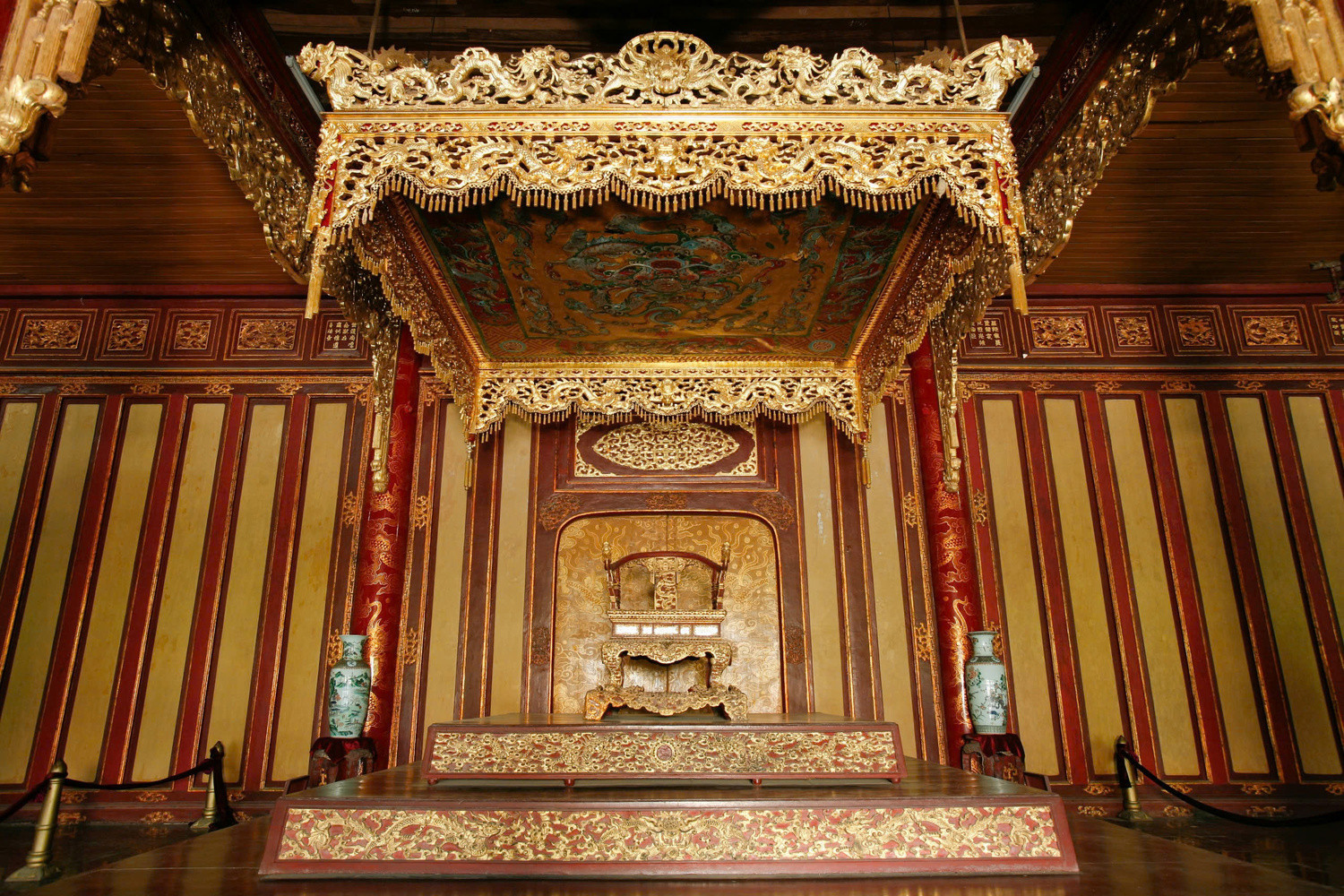The recent attack on the Nguyen dynasty’s imperial throne - a recognized national treasure - has raised urgent concerns about the security of priceless cultural heritage items in Vietnam.
Experts are now calling for the implementation of national security standards for such artifacts, similar to protocols used in professional museums.

On May 24, a man visiting the Thai Hoa Palace inside the Hue Imperial Citadel climbed over a protective barrier and damaged several parts of the Nguyen dynasty throne. The throne, officially designated as a National Treasure in 2015, was left with broken sections, prompting public outrage.
Although security personnel had earlier escorted the man out after noticing erratic behavior, he managed to return and carry out the act of vandalism.
The throne, an enduring symbol of the Nguyen dynasty - the last imperial regime in Vietnam - holds deep historical and cultural significance. Unlike other thrones enclosed behind glass in museums, it is prominently displayed in the main chamber of Thai Hoa Palace, creating a “living museum” experience that allows visitors to immerse themselves in the royal atmosphere.
However, this accessibility also presents serious security risks, particularly for one-of-a-kind artifacts on open display.
Le Thi Thu Hien, Director of the Department of Cultural Heritage, acknowledged the unfortunate incident and described it as highly unusual. Still, she expressed confidence in the Hue Monuments Conservation Center’s ability to restore the throne, given their extensive experience in artifact restoration.
A heritage expert stressed that national treasures, whether publicly exhibited or stored, require multi-layered, high-standard security measures - not the basic levels often found in residential buildings. “Security personnel must be professionally trained, similar to those protecting heads of state,” he noted.
“In light of this event, there must be a national regulatory framework for artifact protection, particularly in places that house rare and significant objects,” he added.
Article 46 of the revised Law on Cultural Heritage mandates that all measures for preserving and securing national treasures, relics, and antiquities must include qualified personnel, proper equipment, environmental control systems, and emergency response capabilities for disasters, theft, and other risks.
Items kept in state-run museums or by authorized government bodies must be stored in secure facilities or designated exhibition areas. Additionally, agencies or individuals responsible for such items are required to develop and implement special protection plans to ensure absolute safety.
In China, the Cultural Heritage Protection Law, first enacted in 1982 and amended in 2002, has undergone another significant revision effective March 1, 2025. The new amendment includes a section titled “Legal Responsibilities,” which substantially increases penalties for violations involving cultural relics.
Severe infractions - such as damaging historical structures or failing to comply with preservation protocols - can now incur fines of up to 10 million yuan (approximately VND 36 billion or USD 400,000), up from the previous cap of 500,000 yuan. The law also emphasizes personal accountability for officials, organizations, and project leaders, imposing stricter penalties, including mandatory reimbursement of restoration costs, professional license revocation, and suspension of operating rights.
Tinh Le - Tuan Chieu